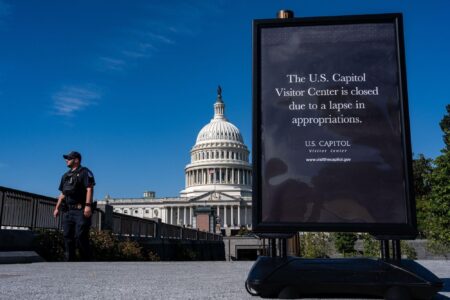Day 630 of the Israel Conflict: Current Situation in Israel, Gaza, and the West Bank
As the Israel-Palestine conflict surpasses 630 days, the region remains mired in instability and ongoing violence. This comprehensive report delves into the latest military actions, humanitarian challenges, and political developments shaping the realities in Israel, Gaza, and the West Bank. By examining the evolving dynamics and international responses, this analysis aims to shed light on the complex factors prolonging the conflict and the prospects for peace amid escalating tensions.
Conflict Overview: Israel, Gaza, and the West Bank – Recent Developments
After nearly two years of hostilities, the security situation across Israel, Gaza, and the West Bank remains highly volatile. The Israeli Defense Forces (IDF) have escalated their operations targeting militant factions in Gaza, reacting to a recent spike in rocket launches and underground tunnel infiltrations. Concurrently, the West Bank has witnessed intensified confrontations between Israeli forces and Palestinian demonstrators, especially in cities like Jenin and Ramallah. Civilians on both sides continue to endure severe disruptions, with critical shortages in medical supplies and damage to essential infrastructure exacerbating humanitarian concerns.
Recent shifts in the conflict landscape include tentative diplomatic engagements and backchannel negotiations aimed at temporary ceasefires. Key developments to monitor include:
- Gaza Strip: Persistent rocket barrages and retaliatory airstrikes have led to mounting civilian casualties and widespread destruction.
- West Bank: Heightened security crackdowns and arrests have fueled unrest and protests among Palestinian communities.
- Global Reaction: Increasing international appeals for ceasefire talks and expanded humanitarian assistance.
| Area | Recent Events | Consequences |
|---|---|---|
| Gaza | Air raids and rocket exchanges | Significant civilian harm and infrastructure loss |
| West Bank | Protests and security operations | Rising detentions and increased tensions |
| Israel | Heightened defense readiness | Elevated public anxiety and security alerts |
Humanitarian Crisis and Civilian Hardships Across the Region
The protracted conflict has intensified the humanitarian emergency affecting millions in Israel, Gaza, and the West Bank. In Gaza, chronic power shortages, dwindling medical supplies, and extensive damage to hospitals and water systems have compounded the hardships faced by a population already strained by years of blockade and economic stagnation. Medical facilities are overwhelmed, with healthcare professionals struggling to manage the influx of casualties amid scarce resources. Thousands of displaced families remain vulnerable as hostilities persist.
In the West Bank and southern Israel, ongoing insecurity disrupts daily life, limiting access to education, employment, and essential services. The main humanitarian challenges include:
- Movement Restrictions: Frequent checkpoint delays and curfews hinder access to healthcare and education.
- Food Shortages: Economic instability reduces availability of basic food items.
- Mental Health Strain: Prolonged exposure to violence exacerbates psychological trauma.
- Infrastructure Damage: Destruction of homes and utilities increases vulnerability.
| Region | Main Challenge | Estimated Population Affected |
|---|---|---|
| Gaza | Critical medical shortages | Approximately 1.9 million |
| West Bank | Restricted mobility | Over 1.4 million |
| Southern Israel | Security concerns | Around 300,000 |
Humanitarian organizations are urgently calling for ceasefire agreements and unimpeded access to deliver aid, emphasizing that immediate action is vital to ease civilian suffering amid the ongoing conflict.
Israeli Military Tactics and Security Enhancements
Israel continues to implement a multifaceted security strategy combining advanced military operations with robust civil defense measures. The IDF has increased precision airstrikes and limited ground incursions, utilizing cutting-edge intelligence from drones and electronic surveillance to target militant infrastructure while attempting to minimize civilian harm. Recent operations have focused on degrading Hamas’s operational capabilities through targeted strikes on leadership and weapons storage sites.
Beyond battlefield tactics, Israel has reinforced border security with enhanced checkpoints and sophisticated monitoring technologies along the West Bank to prevent arms smuggling and unauthorized crossings. Cybersecurity units actively counter hostile cyberattacks aimed at critical infrastructure and communication networks. Civil defense efforts have also been strengthened, with upgraded bomb shelters and improved early warning systems to protect civilians from rocket attacks.
| Security Measure | Description | Effectiveness |
|---|---|---|
| Targeted Airstrikes | Precision attacks on militant command centers | Significant disruption of militant operations |
| Border Surveillance | Advanced monitoring and checkpoint controls | Reduced infiltration and smuggling incidents |
| Cybersecurity Operations | Defense against cyber threats targeting infrastructure | Maintained operational integrity of critical systems |
| Civil Protection | Enhanced shelters and alert mechanisms | Improved civilian safety during attacks |
International Diplomatic Initiatives and Peacebuilding Proposals
The international community has ramped up diplomatic engagement to address the ongoing conflict. The United Nations has reiterated calls for immediate de-escalation, emphasizing the protection of civilians and compliance with international humanitarian law. Various nations and regional bodies have proposed frameworks aimed at fostering dialogue and long-term peace, urging both parties to resume direct negotiations without preconditions.
Key international recommendations include:
- Immediate ceasefire agreements to halt hostilities and facilitate humanitarian aid delivery.
- Multilateral mediation led by the Quartet (UN, US, EU, Russia) to broker dialogue.
- Monitoring mechanisms to ensure transparency and adherence to agreements.
- Support for reconstruction efforts in Gaza and affected West Bank areas.
Experts in conflict resolution advocate for a holistic approach addressing political, social, and economic root causes. Sustainable peace, they argue, hinges on mutual recognition, security assurances, and equitable resource sharing. The table below summarizes prominent peace initiatives and their core proposals:
| Peace Initiative | Primary Focus | Major Proposal |
|---|---|---|
| Oslo Accords | Mutual Recognition | Framework for Palestinian self-governance and phased Israeli withdrawal |
| Arab Peace Initiative | Regional Normalization | Full diplomatic relations in exchange for Israeli withdrawal to 1967 borders |
| Quartet Roadmap | Security and Reform | Phased steps toward Palestinian statehood with security guarantees |
Final Thoughts
As the conflict surpasses 630 days, the situation across Israel, Gaza, and the West Bank remains deeply unstable and fraught with violence. Despite sporadic ceasefires and persistent international appeals for dialogue, cycles of retaliation continue to undermine peace prospects. The profound human toll on all communities highlights the urgent necessity for renewed, comprehensive efforts toward a lasting resolution. Ongoing coverage will provide timely updates and detailed insights as the situation evolves.





